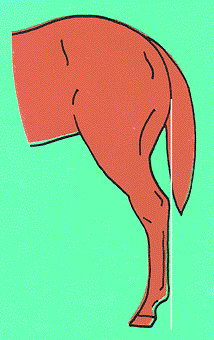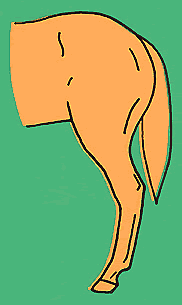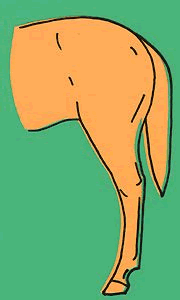Ashley Griffin, University of Kentucky
Correct hind leg structure when viewed from the side is delineated by a line that extends from the point of the buttocks down to the point of the hock and runs parallel to the cannon bone, ending slightly behind the heel.

Sickle-hocked horses have too much angle or set to their hocks. The horse’s leg stands under the hip from the hock down due to the excessive angle of the hock. The hind leg forms the shape of a sickle. This condition predisposes horses to curbs. Many horses with this condition tend to be outstanding athletes for brief periods before unsoundness develops.

Camped-out horses have their hind legs set out behind the point of the buttock posterior to the imaginary line. This fault prevents the horse from getting its hind legs under itself to move collected. These horses tend to jab their legs into the ground and are unable to lift their bodies sufficiently to be good movers.
Post-legged horses are those that do not have sufficient angle to the hock. Their hind leg resembles that of a straight up-and-down post. These horses lack flexion in the hock and tend to be rough to ride, hit the ground hard, and lack ability for collection.



